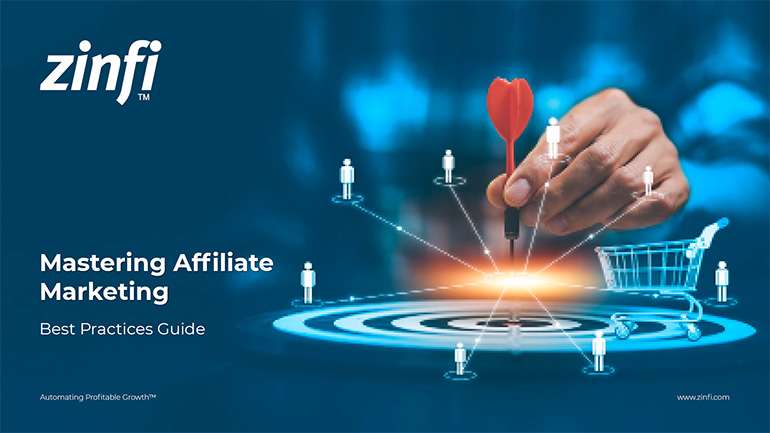Best Practices Articles

Lead Management. Leads Everywhere… How to Pick the Right Automation Software
In our earlier articles on lead management, we discussed why it is essential to have the right strategy, structure, staffing and systems. As a part of building the right systems, we talked about aligning channel programs, processes and platforms. In this article, we will dive a little bit deeper into the automation aspect of lead management. Picking the right lead management software is critical to making an overall lead management program a reality. The primary objective of lead management software is to streamline workflows, approvals and tracking processes from end to end. This is what we will discuss in detail here.
To begin, let’s briefly revisit our earlier framework on lead management where we talked about the need to have product-, segment- and market-focused strategies. We discussed in detail how lead management for an SMB transactional product or service is necessarily very different from high-end enterprise lead management for a complete solution. In this article, we will expand on this fundamental theme of purpose-focused lead management and discuss how to select automation software that can address a specific set of objectives.- Small business lead management automation – As we noted before, in most cases management of leads for the channel comes down to simple deal registration. Most organizations that are starting to build a channel need a simple deal capture form to be used by the channel partner while submitting deal details information. These organizations may also require some simple approval flows and processes, with one or two people from the channel sales organization reviewing the specific aspects of a deal and approving it. In very rare circumstances you may require comprehensive—and therefore more complicated—lead capture forms or lead approval flows.
- Mid-market lead management automation – As an organization matures and reaches a size where it has more than 100 partners and between 100 and 1,000 employees, it probably needs more comprehensive lead management automation. Management of leads in this scenario is no longer just about automating deal registration; it also becomes important to automate the distribution of leads to partners. Approval processes also tend to vary by segment and region, and the lead management automation software must be able to address these additional requirements.
- Enterprise lead management automation – This is where management of leads tends to vary quite a lot. Depending on the size of an enterprise and the breadth of its offerings, some products may require only simple deal registration, while others may require lengthy tracking and automation from cradle to close. There may also be legal requirements to automate certain parts of the end-customer notification process to comply with various industry segments the vendor sells to. With large enterprises, for every $2 to $5 billion in incremental revenue, it is logical to expect different lead management and deal registration forms and flows. Any software system chosen for management of leads in this context must have the flexibility to accommodate multiple forms and flows.
- Data privacy – In today’s world of data regulations driven by many countries, it is essential that your software to comply with the European Union’s General Data Protection Regulation (GDPR), the California Consumer Privacy Act (CCPA) and other, similar regulations.
- Data security – Your lead management software must have not only multi-tenant architecture, but also industry-standard encryption for data in motion and rest to comply with various data privacy and security requirements.
- Mobile application – Today’s partner sales reps are essentially mobile and often not behind their desks. As a result, having lead distribution and deal registration functionality in a mobile application is critical for timely follow-up and closure.
- Lead alerts – Because most partners carry products from multiple vendors, partners sales reps sometimes miss following up on leads. An automated lead alert and management system is essential to bridging this gap.
- Dynamic reports – Last but not least, the ability to produce dynamic reports for all users at all levels is critical to ensuring that partners’ administrators, as well as their reps, can see lead aging reports and track progress in real time.
Best Practices Guidebook
 Winning with Partner Advisory Councils: Best Practices for Partner Engagement & Growth
Winning with Partner Advisory Councils: Best Practices for Partner Engagement & GrowthDownload Guide
 The Future of Partner Ecosystems Best Practices
The Future of Partner Ecosystems Best PracticesDownload Guide
 The AI Revolution: How Technology and Talent are Shaping the Future
The AI Revolution: How Technology and Talent are Shaping the FutureDownload Guide
 Top 105 Partner Management Metrics that Matter Best Practices
Top 105 Partner Management Metrics that Matter Best PracticesDownload Guide
 Mastering PRM Integration Best Practices
Mastering PRM Integration Best PracticesDownload Guide
 Building a Sales Partner Portal with Salesforce Best Practices
Building a Sales Partner Portal with Salesforce Best PracticesDownload Guide
 Building and Managing Partner Ecosystems Best Practices
Building and Managing Partner Ecosystems Best PracticesDownload Guide
 Mastering Co-Marketing and Co-Selling Best Practices
Mastering Co-Marketing and Co-Selling Best PracticesDownload Guide
 Transforming Partner Ecosystems Best Practices
Transforming Partner Ecosystems Best PracticesDownload Guide
 Mastering Partner Ecosystems Best Practices
Mastering Partner Ecosystems Best PracticesDownload Guide
 Mastering Partner Onboarding Best Practices
Mastering Partner Onboarding Best PracticesDownload Guide
 Partner Ecosystem Management Best Practices
Partner Ecosystem Management Best PracticesDownload Guide
 B2B Marketing in the Age of Intelligence Best Practices
B2B Marketing in the Age of Intelligence Best PracticesDownload Guide
 Multi-Partner Co-Selling Best Practices
Multi-Partner Co-Selling Best PracticesDownload Guide
 A Guide to Enhance Channel Sales Efficiency
A Guide to Enhance Channel Sales EfficiencyDownload Guide
 Mastering Affiliate Marketing Best Practices
Mastering Affiliate Marketing Best PracticesDownload Guide
 The Ultimate Guide to Channel Partner Management
The Ultimate Guide to Channel Partner ManagementDownload Guide
 Top 10 Trends in 2024 Partner Relationship Management
Top 10 Trends in 2024 Partner Relationship ManagementDownload Guide







